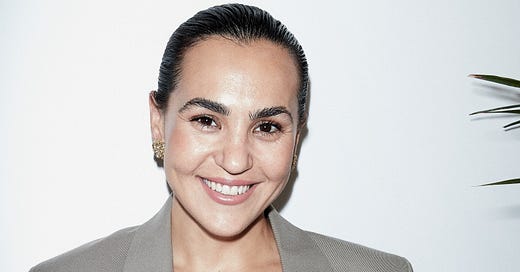It takes a village to make a jewelry business happen and thrive.
My experience writing on the subject has shown me how decisive that ecosystem is, yet how wildly different its courtesies can feel.
Brands may be fairly successful, but those of us orbiting their world are not always met with the same grace. Showrooms can be overly performative and closed off, kind only to the already known. And yet, reputation matters. Word of mouth is a slow currency, but a very powerful one.
That’s why I wanted to share a good example.
Some of the most exciting jewelry I’ve come across in the past few years can be stitched together by a shared standard. When I applied for the US residency, I got these earrings from Susana Vega. The akoya earrings I wore at my wedding are by Emili, a gorgeous Korean-Japanese brand. The earrings that put me in the summer mood are Lizzie Fortunato. Ana represents them all.
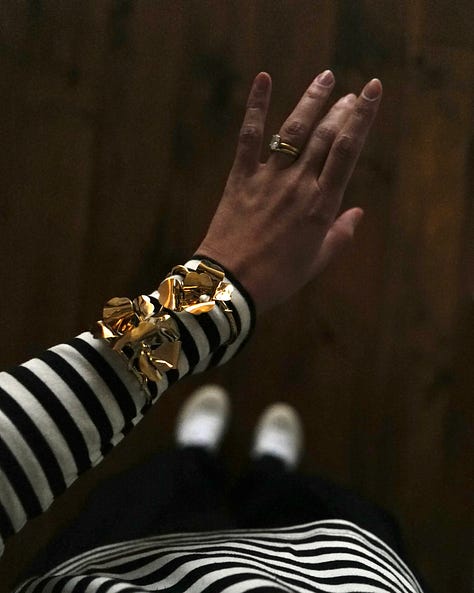
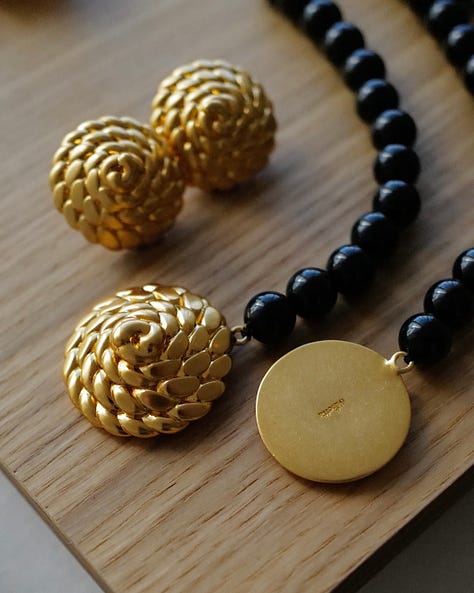
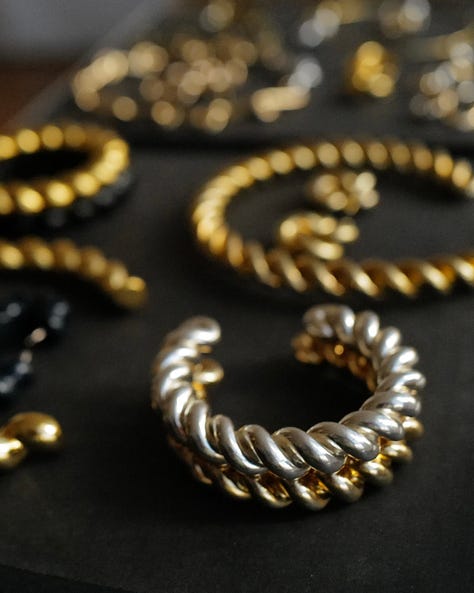
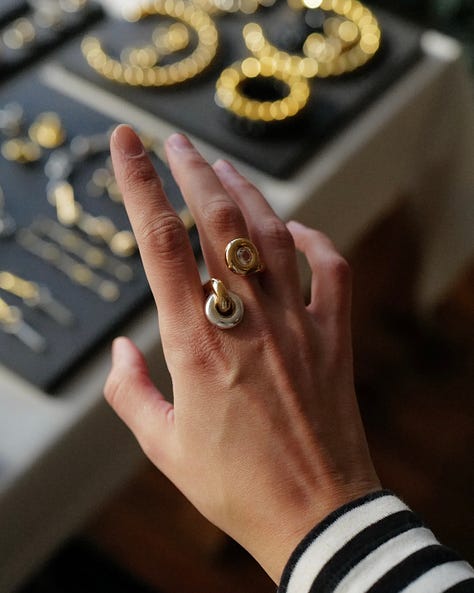

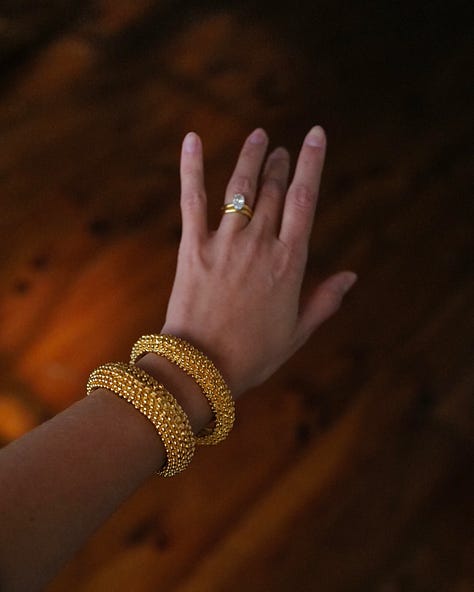
Through her Barcelona-based agency, AR Represents, Ana works with designers (most of them women) whose pieces feel both culturally attuned while deeply individual. Many of them work in the category of fashion jewelry, where alternative materials allow for bolder forms. They strike that rare balance between wearability and edge, and come in at price points that feel very compelling for the quality of work involved.
I spoke with Ana about what that looks like in practice: how she chooses the designers she works with, what thoughtful representation actually means, and why the space between commerce and care is where things start to get interesting. That’s why I wanted to introduce her to you, dear reader—enjoy!
1. Ísis: What first pulled you into the world of jewelry? Is that original spark still what keeps you going?
Ana: I’ve often asked myself this question, yet I can’t quite pinpoint one defining moment. What I do remember vividly, though, is spending summer holidays at eight years old making braided cotton friendship bracelets and selling them—definitely underpriced! Even then, I didn’t see myself as a "designer," but I loved collecting beautiful things and experimenting with my personal style.
As I grew older, especially during my teenage years, my passion for accessories really began to flourish. Jewellery, handbags, and shoes quickly became objects of devotion—each one a small expression of identity and mood.
My mother and grandmothers played such a meaningful role in shaping my aesthetic and understanding of quality. They taught me how to distinguish fabrics, recognise good leather, and appreciate true craftsmanship. Watching them get dressed—the way they wore their jewelry, styled their clothing, applied their makeup—was like witnessing an art form. It inspired me to explore this fascinating world even more deeply.
That initial spark is still very much alive today—and I don’t think it will ever fade. I get genuinely excited by new designs, the evolution of trends, and the way fashion constantly reinvents itself while honouring its roots.
2. Ísis: The jewelry market moves fast, often shaped by trends, hype, and noise. Since launching AR Represents, how have you seen the industry evolve?
Ana: I launched AR Represents from my mother-in-law’s garden in Perth, Australia—born out of sheer determination (and a bit of desperation) to continue the career I had built and cherished in London, particularly during my time as Wholesale Director at Carolina Bucci.
Since then, I’ve seen countless trends come and go: the rise of demi-fine jewellery, the arrival of the ear cuff, your niece’s homemade beaded bracelets, the homage (and occasional imitation) paid to the great Elsa Peretti, the so-called death of the “neckmess,” and the bold return of maximalism.
I’m not entirely trend-averse—there’s fun to be had in the moment—but when it comes to curating the roster of talent I represent, the deciding factor is always this: Can the brand stand on its own, beyond the trend?
For me, the brands that truly resonate have a distinct DNA and a clear understanding of the audience they aspire to dress. We’re not here to please everyone—and that’s entirely the point. Especially when trends are stretched to the point of saturation, it’s the strength of a brand’s identity that cuts through the noise. That’s when our audience connects with us most deeply—and it’s incredibly rewarding.
3. Ísis: If you had to distill the essence of your clients/designers into a single word, what would it be?
Ana:
APOA poetic
JULIETTA bold
LIZZIE FORTUNATO thoughtful
PAOLA SIGHINOLFI textural
UNCOMMONMATTERS confident
SUSANA VEGA vibrant
4. Ísis: From Emili to Lizzie Fortunato to Uncommon Matters, your portfolio spans continents—on both the client and buyer sides. It all holds together beautifully, with a clear throughline. What guides your decision when choosing partners?
Ana: I take great pride in representing a diverse and carefully curated portfolio of brands, and in building relationships with my clients that go beyond the typical agent–brand dynamic. Loyalty is a core value for me, both personally and professionally, and it’s something I bring to every partnership. Because of this, my roster is thoughtfully defined and rarely changes—I’m selective and exacting when it comes to choosing new brands to represent.
Our team is small but mighty, managing every aspect of the business for our brands—from the initial collection sketches through to sales training and follow-up after orders are delivered, and everything in between. Many of the brands we work with are one-woman shows, which means we take special care to provide the tailored level of service and resources they need to successfully market their collections.
When considering a new brand, our first question is always: What can we do to support this brand? And secondly: What can the brand do for itself? A strong, defined aesthetic, clear roots, distinct DNA, and excellence in craftsmanship and materials are essential, but we look beyond that. We ask ourselves if there’s a genuine wholesale market need for the product. Can the brand meet the demands of the wholesale calendar? Can our wholesale strategy add value to their direct-to-consumer business? And do they have the stamina and capacity to create, produce, and deliver three collections per year?
When it comes to retail and buying partners, we hold ourselves to the same high standards. We collaborate with major e-commerce platforms, department stores, multi-brand boutiques, specialty retailers, and museum/gallery shops worldwide. Our day begins in Japan and ends in Los Angeles, and we adapt our strategies, communication, and negotiations to the unique needs of each retailer. This global dynamic is one of the most exciting parts of the business for me—understanding and responding to the many facets and realities of the market to meet our clients’ expectations wherever they are.
Our brands specialise in luxury fashion jewelry, and we strive to pair their collections with the right retailers—places where our audience will truly appreciate and engage with their work.
5. Has anything caught your eye recently—a piece of jewelry, a campaign, a collaboration—that felt especially well done?
Ana: Yes! Hugo Kreit’s collection and social media campaigns - BRAVO!
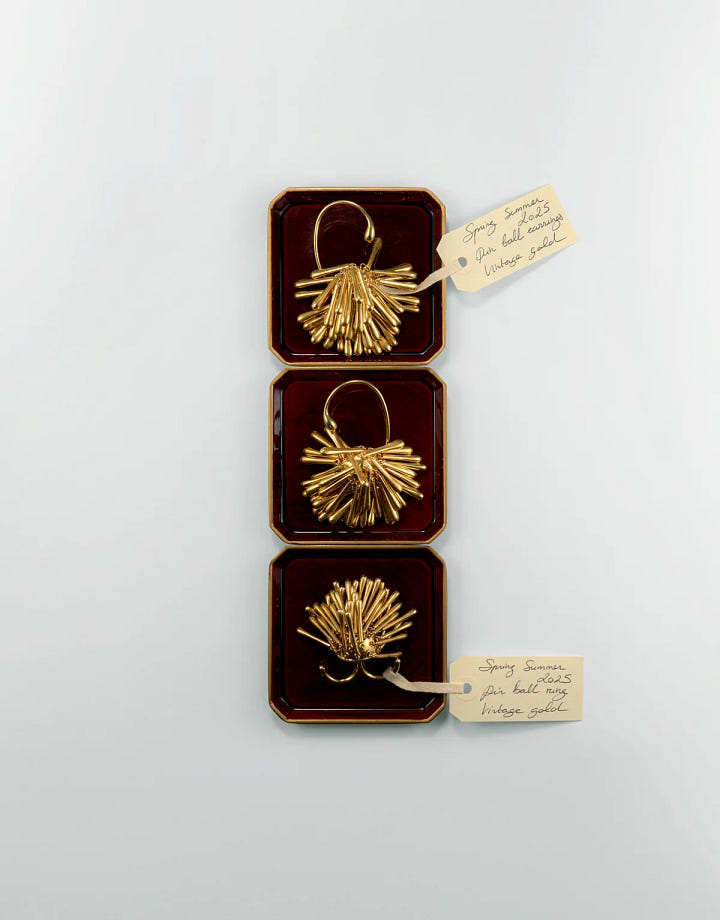
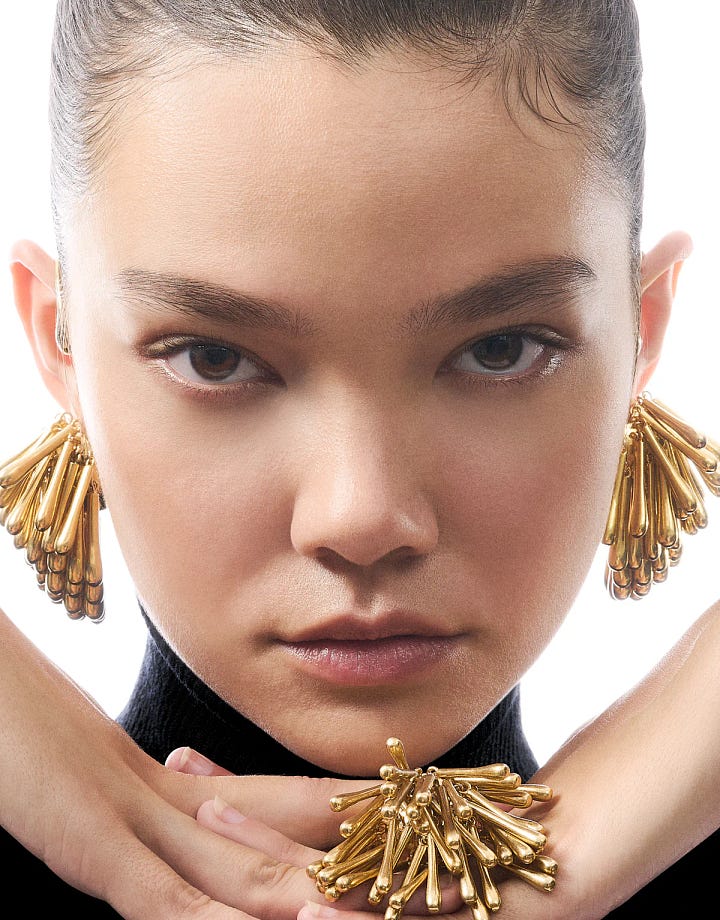
You can see more of AR’s work on her Farfetch curation, her website and Instagram.
Your curiosity keeps the conversation alive; I’m eager to hear what you’re thinking.
All my best,
Ísis
The Sin of Mediocrity
I was rewatching some old Anthony Bourdain episodes recently, and it struck me how deeply obsessive he could be. At one point, he tells his editor something along the lines of do something, anything, but do not commit the sin of mediocrity.


